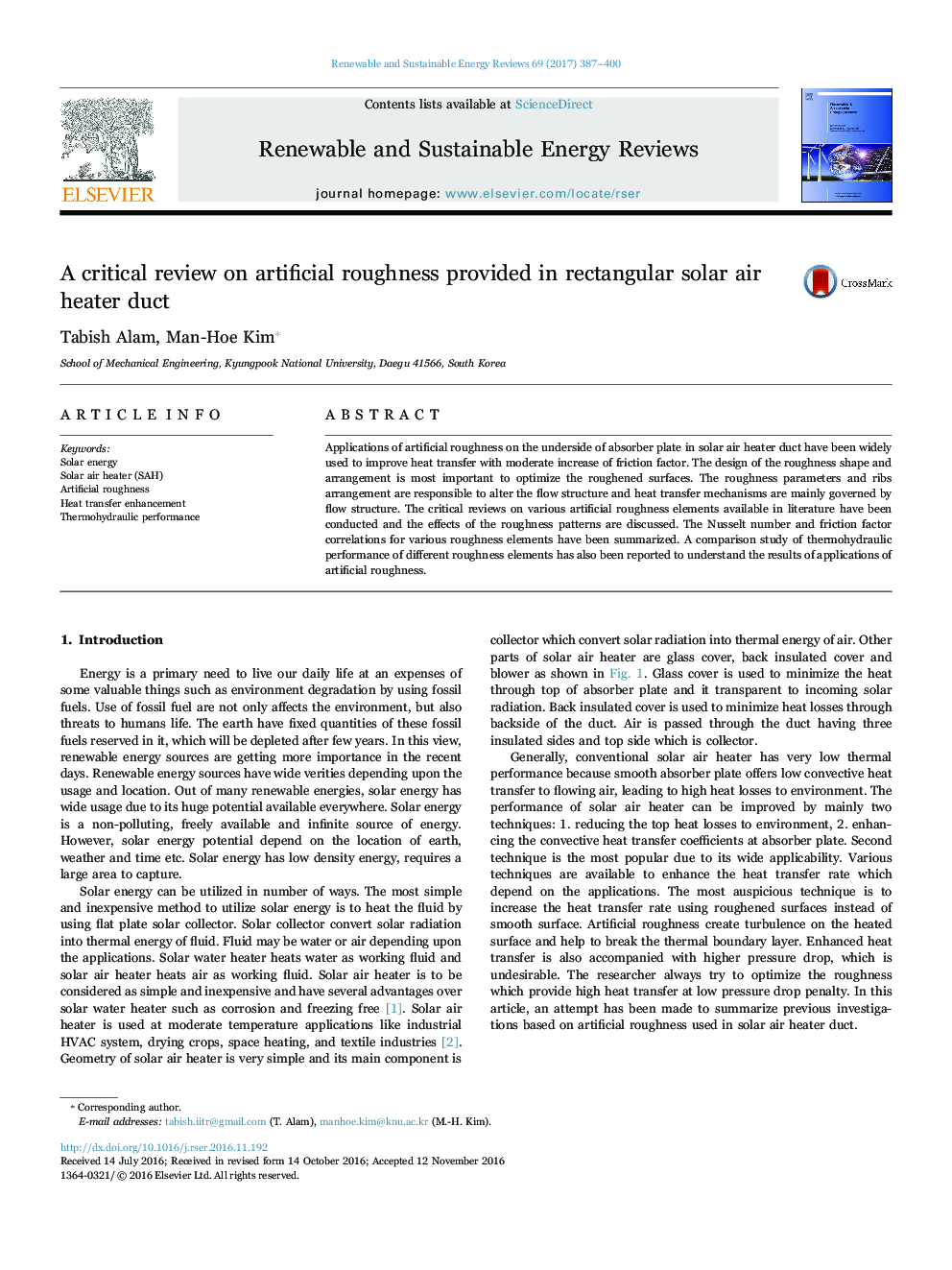| Article ID | Journal | Published Year | Pages | File Type |
|---|---|---|---|---|
| 5483340 | Renewable and Sustainable Energy Reviews | 2017 | 14 Pages |
Abstract
Applications of artificial roughness on the underside of absorber plate in solar air heater duct have been widely used to improve heat transfer with moderate increase of friction factor. The design of the roughness shape and arrangement is most important to optimize the roughened surfaces. The roughness parameters and ribs arrangement are responsible to alter the flow structure and heat transfer mechanisms are mainly governed by flow structure. The critical reviews on various artificial roughness elements available in literature have been conducted and the effects of the roughness patterns are discussed. The Nusselt number and friction factor correlations for various roughness elements have been summarized. A comparison study of thermohydraulic performance of different roughness elements has also been reported to understand the results of applications of artificial roughness.
Related Topics
Physical Sciences and Engineering
Energy
Renewable Energy, Sustainability and the Environment
Authors
Tabish Alam, Man-Hoe Kim,
